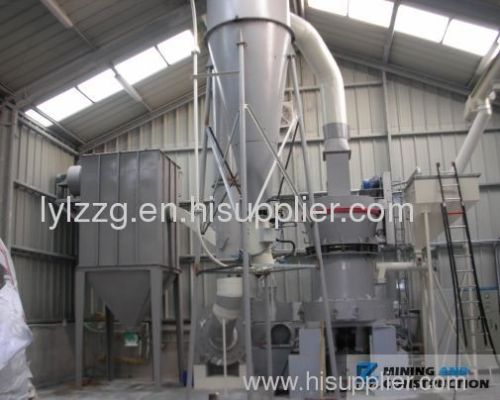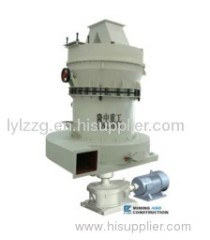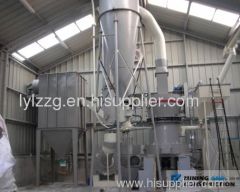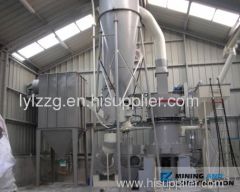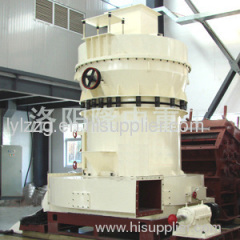|
Luoyang Longzhong Heavy Machinery Co.,Ltd.
|
R Mill
| Payment Terms: | T/T,L/C,WU |
| Place of Origin: | Henan, China (Mainland) |
|
|
|
| Add to My Favorites | |
| HiSupplier Escrow |
Product Detail
R mill is widely used in powder- making in mining, building, metallurgy and chemical industry
R mill is widely used in powder- making in mining, building, metallurgy and chemical industry to crush barite, calcite, talcum, marble, limestone, pottery and glass with the moth under 7 grade and moisture content less than 6%. The fineness is adjustable from 100 to 325 meshes.
Working principle
R mill is made up of main frame, powder classifier, pipe devices and blower, and it can be equipped with jaw crusher, bucket elevator, vibrating feeder and electrical generator. After being crushed into the desired size, the materials are sent to the copper by a bucket elevator, and then evenly and continually to the grinding room by the vibrating feeder. With the centrifugal force, the rollers are swinging outward and press the rings closely. The materials are scope up by the shovels to the room between the rollers and the rings and crushed. The fine powder is bowed to the powder separator by the blower to be classified, and the coarse materials fall to the grinding room and the qualified powder are sent to powder concentrator and then discharged through powder pipe as the final product. As the moisture in the materials is evaporated because of heat caused in the process of grinding and the interface is not close, the air pressure inside is high, in order to ensure that the mill works under negative pressure, the air increased is discharged outside after being purified through bag filter.
Features and benefits
1. R mill is vertical and takes small room. It is an independent production system from feeding material to final product.
2. Fineness of final product is even and the passing rate can be up to 99%, which is incomparable by other mills.
3. The transmission device of the main frame uses close gear and pulley, which runs smoothly and stably.
4. The important part is made by qualified steel and wearing parts by high qualified wearable material.
5. As the electric control system is centralized, no people are needed in operating room, and it is easy to maintain.

